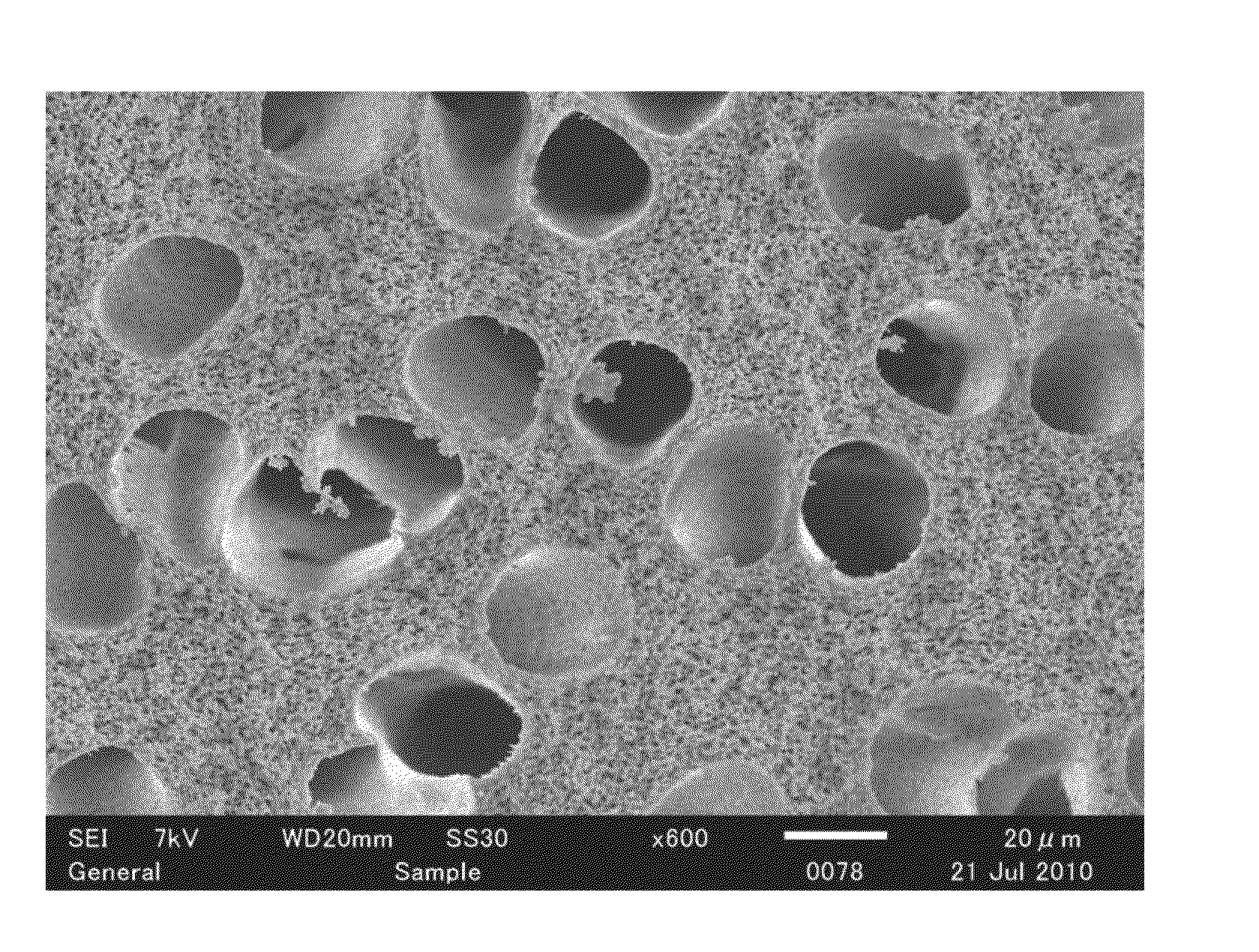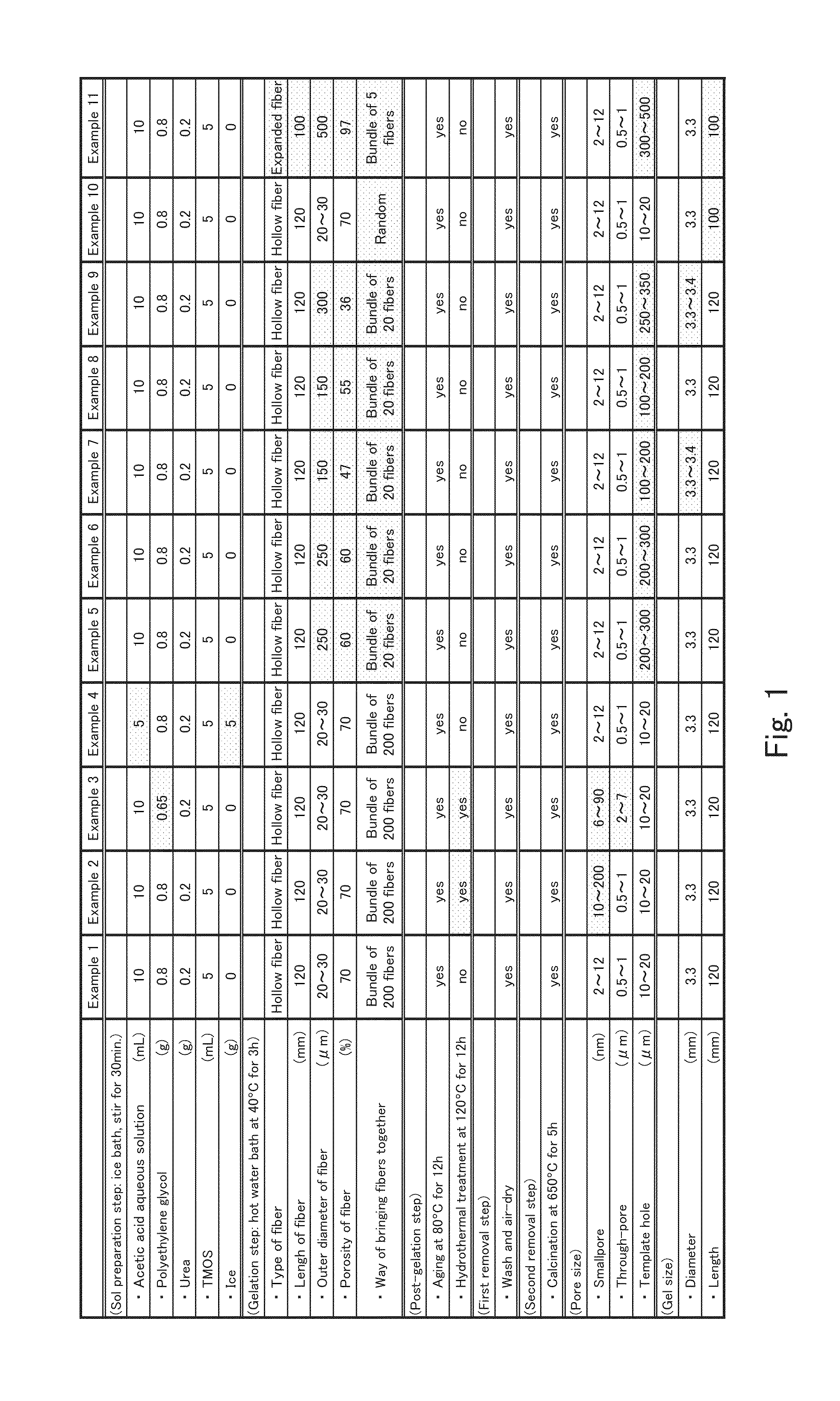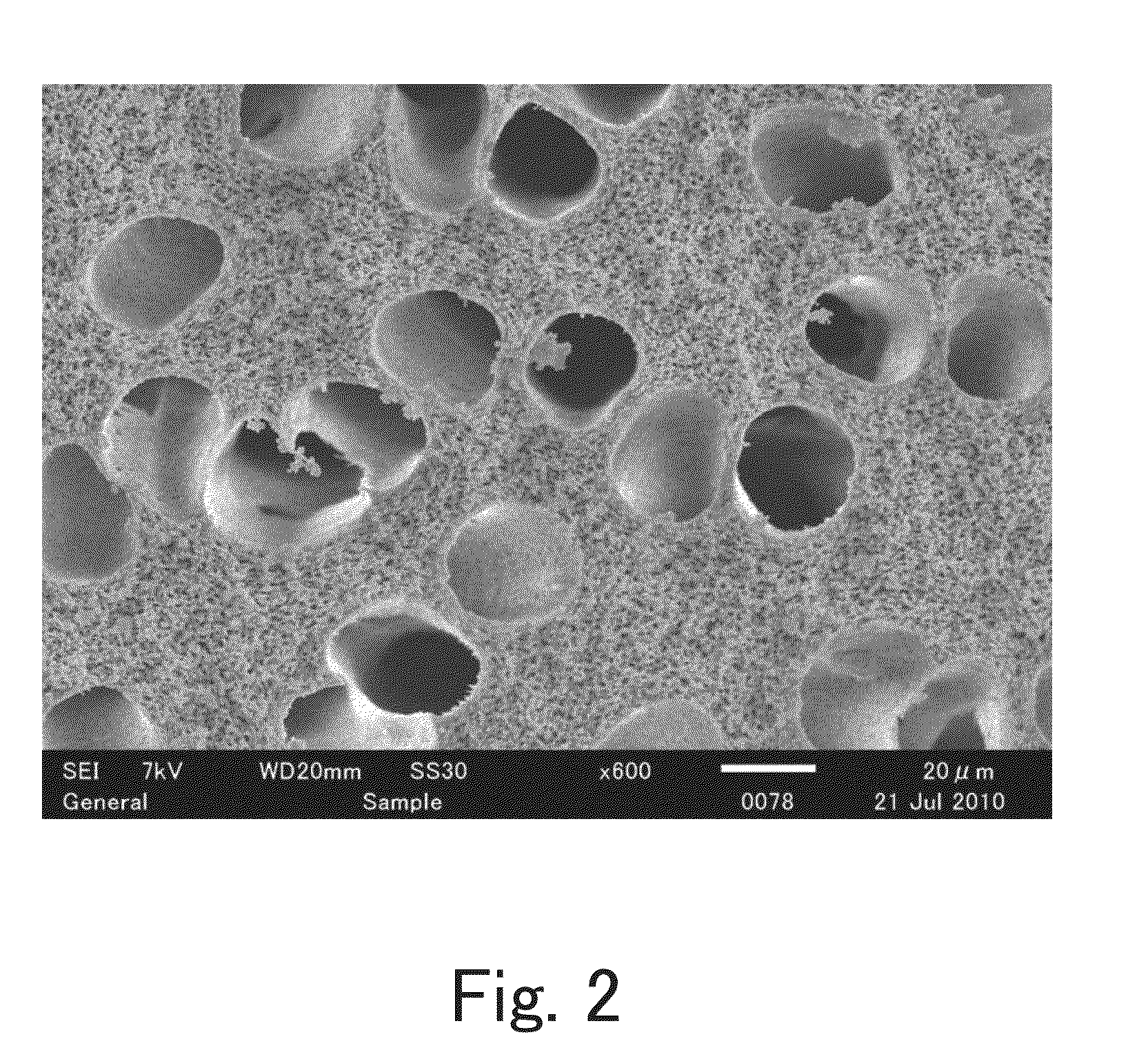Method for Producing Porous Monolith
a monolithic, porous body technology, applied in the direction of inorganic chemistry, chemical apparatus and processes, molecular-sieve compounds, etc., can solve the problem of strict control of all pores, and achieve the effects of high contractility, large porosity, and stress application
- Summary
- Abstract
- Description
- Claims
- Application Information
AI Technical Summary
Benefits of technology
Problems solved by technology
Method used
Image
Examples
example 1
[0062]In 10 mL (milliliter, cm3) of a 0.01 M (volume molar concentration) acetic acid aqueous solution were dissolved 0.8 g of polyethylene glycol (molecular weight of 100000) that is a coexisting material and 0.2 g of urea, and the solution was stirred to form a homogeneous solution. Thereto was added 5 mL of tetramethoxysilane (TMOS, silica precursor) in an ice bath, and the mixture was stirred for 30 minutes to obtain a homogeneous precursor sol (sol preparation step). Two hundred hollow fibers having a length of 120 mm (AEROCAPSULE manufactured by Teijin Fibers Limited, material: polyester, outer diameter: about 20 to 30 μm, porosity: about 70%) were bundled together to configure a template in an aggregation having a three-dimensional spread, and the template was housed in a vinyl chloride cylindrical container having an inner diameter of 4 mm and a length of 150 mm while the longitudinal direction of the fibers was aligned with the longitudinal direction of the container. Then,...
example 2
[0063]The sol preparation step and the gelation step as in Example 1 were performed, and the resulting wet gel was aged for 12 hours in an oven at 80° C., and the aged gel was taken out from the oven, immersed in 0.1 M ammonia water, and subjected to a hydrothermal treatment in an autoclave at 120° C. for 12 hours (post-gelation step), and the first removal step and the second removal step as in Example 1 were performed, to obtain a monolithic porous body of a silica gel having a trimodal hierarchical porous structure (smallpore size: 10 to 100 nm, through-pore size: 0.5 to 1 μm, template hole size: 10 to 20 μm). In Example 2, the same treatments as in Example 1 were performed, except for adding the hydrothermal treatment in the post-gelation step for Example 1.
example 3
[0064]In 10 mL of a 0.01 M acetic acid aqueous solution were dissolved 0.65 g of polyethylene glycol (molecular weight of 100000) and 0.2 g of urea, that were coexisting materials, and the solution was stirred to form a homogeneous solution. Thereto was added 5 mL of tetramethoxysilane in an ice bath, and the mixture was stirred for 30 minutes to obtain a homogeneous precursor sol (sol preparation step). The gelation step and the post-gelation step as in Example 1 were performed, and the aged gel was taken out from the oven, immersed in 0.1 M ammonia water, subjected to a hydrothermal treatment in an autoclave at 120° C. for 12 hours, and washed with water and ethanol, then air-dried (first removal step), and the second removal step as in Example 1 was performed, to obtain a monolithic porous body of a silica gel having a trimodal hierarchical porous structure (smallpore size: 6 to 90 nm, through-pore size: 2 to 7 μm, template hole size: 10 to 20 μm). In Example 3, the same treatmen...
PUM
| Property | Measurement | Unit |
|---|---|---|
| porosity | aaaaa | aaaaa |
| diameter | aaaaa | aaaaa |
| porosity | aaaaa | aaaaa |
Abstract
Description
Claims
Application Information
 Login to View More
Login to View More - R&D
- Intellectual Property
- Life Sciences
- Materials
- Tech Scout
- Unparalleled Data Quality
- Higher Quality Content
- 60% Fewer Hallucinations
Browse by: Latest US Patents, China's latest patents, Technical Efficacy Thesaurus, Application Domain, Technology Topic, Popular Technical Reports.
© 2025 PatSnap. All rights reserved.Legal|Privacy policy|Modern Slavery Act Transparency Statement|Sitemap|About US| Contact US: help@patsnap.com



